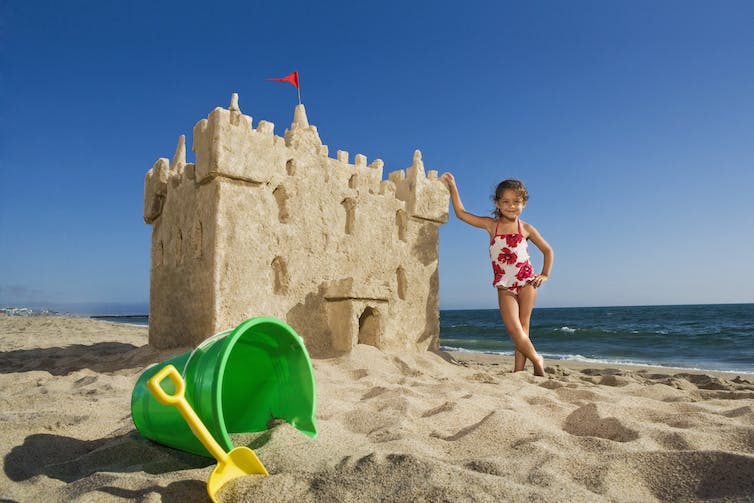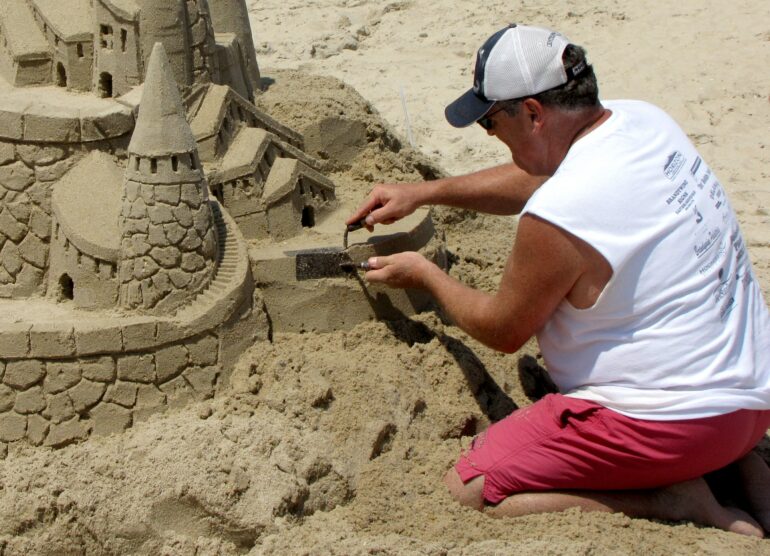If you want to understand why some sandcastles are tall and have intricate structures while others are nearly shapeless lumps of sand, it helps to have a background in geotechnical engineering.
As a geotechnical engineering educator myself, I use sandcastles in the classroom to explain how interactions of soil, water and air make it possible to rebuild landscapes after mining metals critical to the energy transition.
Building a sandcastle comes down to the right mix of those three ingredients. Sand provides the structure, but it’s water between the sand grains that provides the force – in this case, suction – that holds the sand together. And without the right amount of air the water would just push the sand grains apart.
Not just any sand
Sand grains, according to the standards body ASTM International’s Unified Soil Classification System, are soil particles having a diameter of 0.003 inches (0.075 mm) to 0.187 inches (4.75 mm). Sands, by definition, have at least half their particles in that range. Silt or clay is soil with particles smaller than sand size. And soil with particles larger than sand size is gravel.
The size of particles, or grains, also determines the way sand looks and feels. The smallest sand grains have a texture almost like powdered sugar. The largest grains are more like the size of small dry lentils.
Most sand will work for building a sandcastle, but the best sand has two characteristics: grains of sand in several different sizes and grains with angular or rough edges. Variation in grain size allows smaller sand grains to fill the pockets, or pores, between the larger sand grains. The result is increased sand strength.
Sand grains that are more angular, with sharp corners on them, lock together better, making the sandcastle stronger. It’s the same reason a pile of angular wooden blocks will stay in a pile, but a pile of marbles will go everywhere.
This is also why, surprisingly, the best sand for sandcastles is not typically found on an island or a coastal beach. More angular grains of sand are usually found closer to mountains, their geologic source. These sand grains have not yet had their edges rounded off by wind and water. Professional sandcastle builders will go so far as to import river sand for their creations.
Finally, the closer together the sand grains are, the stronger the sand will be. Pressing wet sand together tightly, by compaction or tamping, squeezes sand grains together, decreasing the size of pores and increasing the effect water can have. Compaction also increases grain interlocking and, consequently, sand strength.

Building a sandcastle calls for finding the right mix of air, water and sand.
Tony Garcia/Stone via Getty Images
Water is key
Without water, sand just forms a pile. Too much water and sand flows like liquid. But between dry sand and saturated sand lies a wide range of moisture levels that enable sandcastle…
